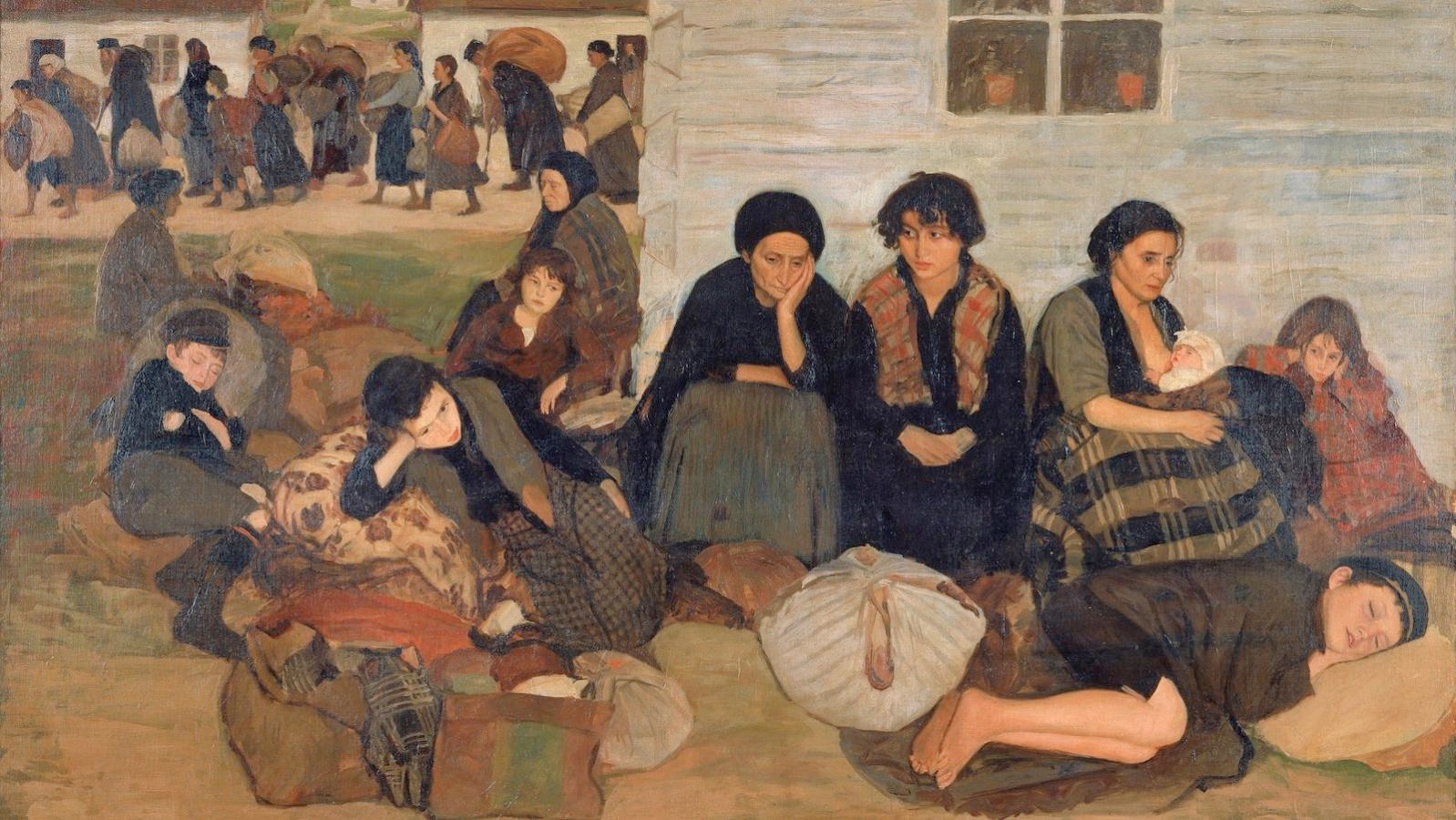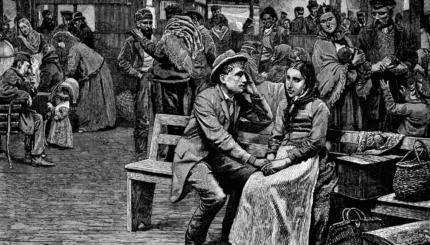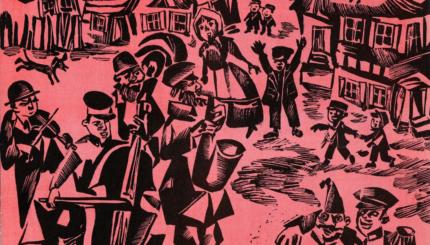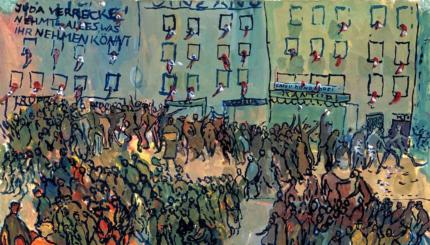The word pogrom comes from a Russian word meaning “to destroy, to wreak havoc, to demolish violently.” The term was first used to refer to outbreaks of anti-Jewish violence by non-Jewish street mobs in the Russian Empire from 1881–1884. Pogroms continued to occur in the early 20th century and during and immediately after World War II in Eastern Europe, Germany and beyond. Historian John Klier notes that “By the twentieth century, the word ‘pogrom’ had become a generic term in English for all forms of collective violence directed against Jews,” including incidents that predated the term, and later was also applied to similar violence against other ethnic minorities.
Though the precise characteristics of a pogrom vary widely depending on the specific incidents, a pogrom is generally considered to be a violent attack against a group based on their ethnic identity, and is mostly used to refer to attacks against Jews in 19th and 20th-century Europe.
Where did pogroms originate?
Most of the original pogroms took place in an area that became known as the Pale of Settlement, a territory the Russian Empire acquired between 1791–1835. The Russian government forbade its new Jewish subjects from settling in Russian territory outside the Pale of Settlement, an area that included parts of present-day Lithuania, Belarus, Ukraine, Moldova and Poland. Although an 1821 attack in Odessa is sometimes considered to be the first pogrom in the Russian Empire, most historians cite 1881 incidents beginning in Elizavetgrad (in present-day Ukraine) as the beginning of the Russian pogrom phenomenon. The Elizavetgrad violence spread rapidly throughout seven provinces in southern Russia and Ukraine, where peasant attackers looted Jewish stores and homes, destroyed property, and raped women. Many individuals were beaten and/or murdered in these pogroms. In 1881 pogroms also occurred in Kiev and Odessa among a hundred other locations. The first Jewish self-defense organizations, initiated by students at Novorossiysk University in Odessa, began to form at this time.
Did the Russian government support pogroms?
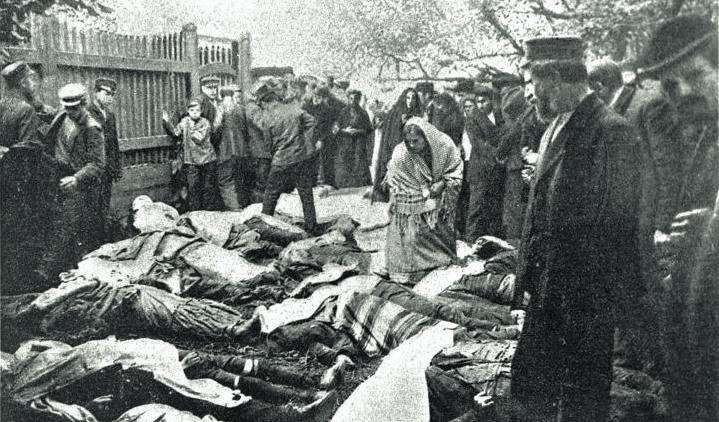
With your help, My Jewish Learning can provide endless opportunities for learning, connection and discovery.
Historians disagree about the degree to which the Russian government may have been involved in coordinating these attacks; some argue that it was not involved and some that it must have been. Either way, official response was often slow. In some cases only after days of violence did the police and military intervene to restore order, and they sometimes joined the violent mobs.
What factors led to the pogroms?
The main inspiration for these vicious attacks was the ideology of anti-Semitism, which blamed Jews for weakened economic conditions and political instability, in addition to the claim that Jews murdered Jesus and the blood libel myth that Jews murdered Christian babies and baked their blood into matzah. It was also rumored that Jews were connected to the 1881 assassination of Czar Alexander II by members of the Narodnaya Volya socialist movement. During the 1880s, the Russian government enacted anti-Jewish legislation limiting the number of Jews who could attend secondary schools and universities and preventing Jewish law school graduates from joining the bar. In 1882 Czar Alexander III (Alexander II’s son and successor) authorized the “May Laws,” which restricted where Jews could settle, forbade non-Jews from issuing mortgages to Jews and prohibited Jews from conducting business on Sundays.
How did Jews respond to pogroms?
Even as the incidence of pogroms slowly lessened in the late 1880s, mostly due to outcry from the West, Jews sought refuge in Western Europe and the United States, in addition to the land of Israel, which was then under Ottoman rule. Pogroms also inspired many Jews to become politically active, joining organizations such as the General Jewish Labor Bund, Bolshevik groups and self-defense leagues. Some Russian Jews found hope in Zionism. The pogroms also spurred American Jews to organize on behalf of their Russian brethren, and was cited as a factor in the establishment of the American Jewish Committee.
What were some of the worst pogroms in history?
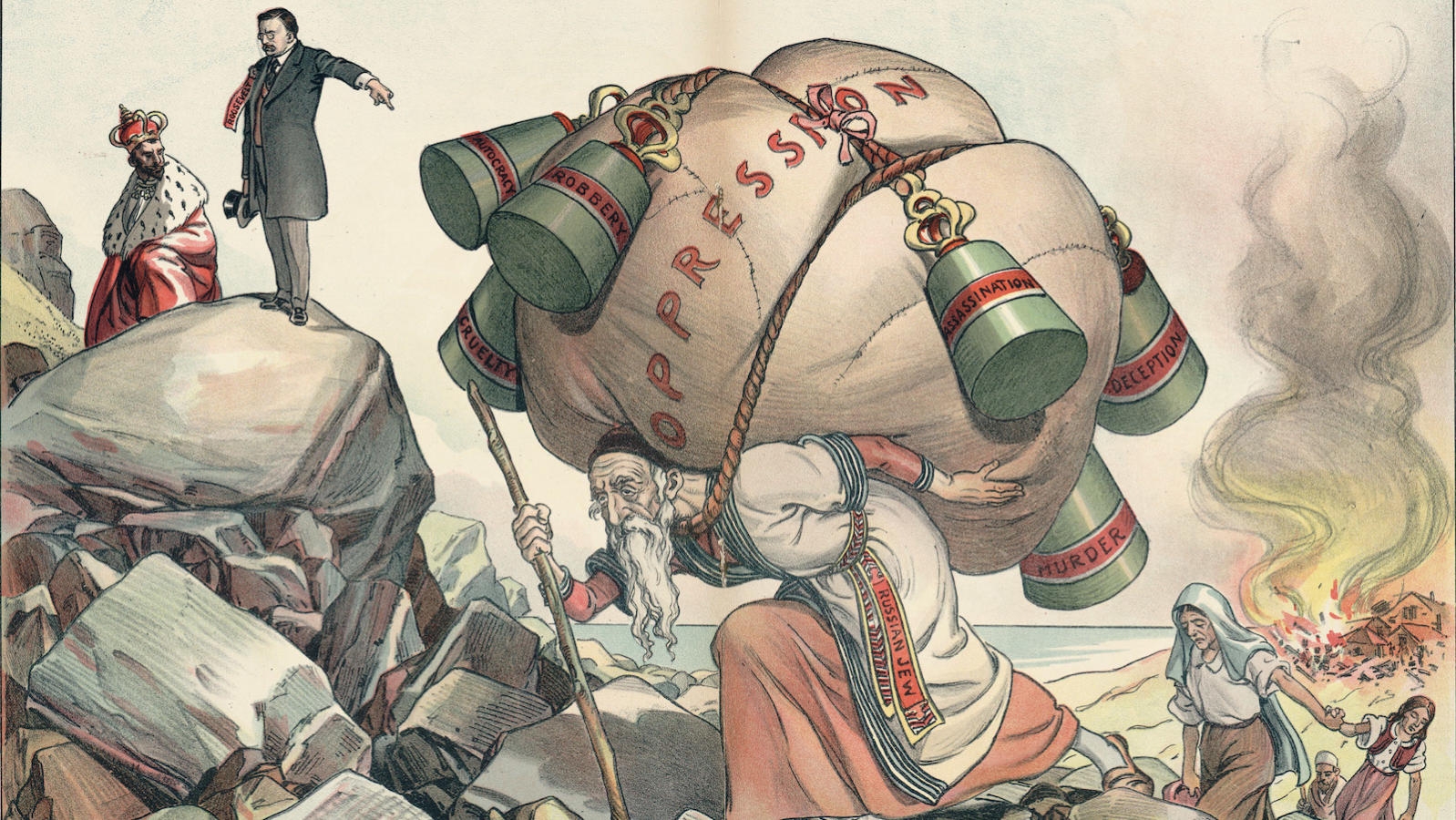
Pogroms continued to occur in the early 20th century. Particularly violent were the pogroms from 1903 to 1906. The horrific 1903 pogrom in Kishinev, in what is now Moldova, killed dozens of Jews and resulted in the destruction of hundreds of homes and business, prompting tens of thousands of Russian Jews to flee. The Zionist poet Hayyim Nahman Bialik wrote his famous poem, “City of Slaughter,” in response to the Kishinev pogrom. The 1905 pogrom in Odessa left about 2,500 Jews dead. In 1919 Cossacks (paramilitary fighters who had been absorbed into the Russian military) led a pogrom in Kiev in which they killed 14 people, and injured and raped others.
Did pogroms occur outside Russia?
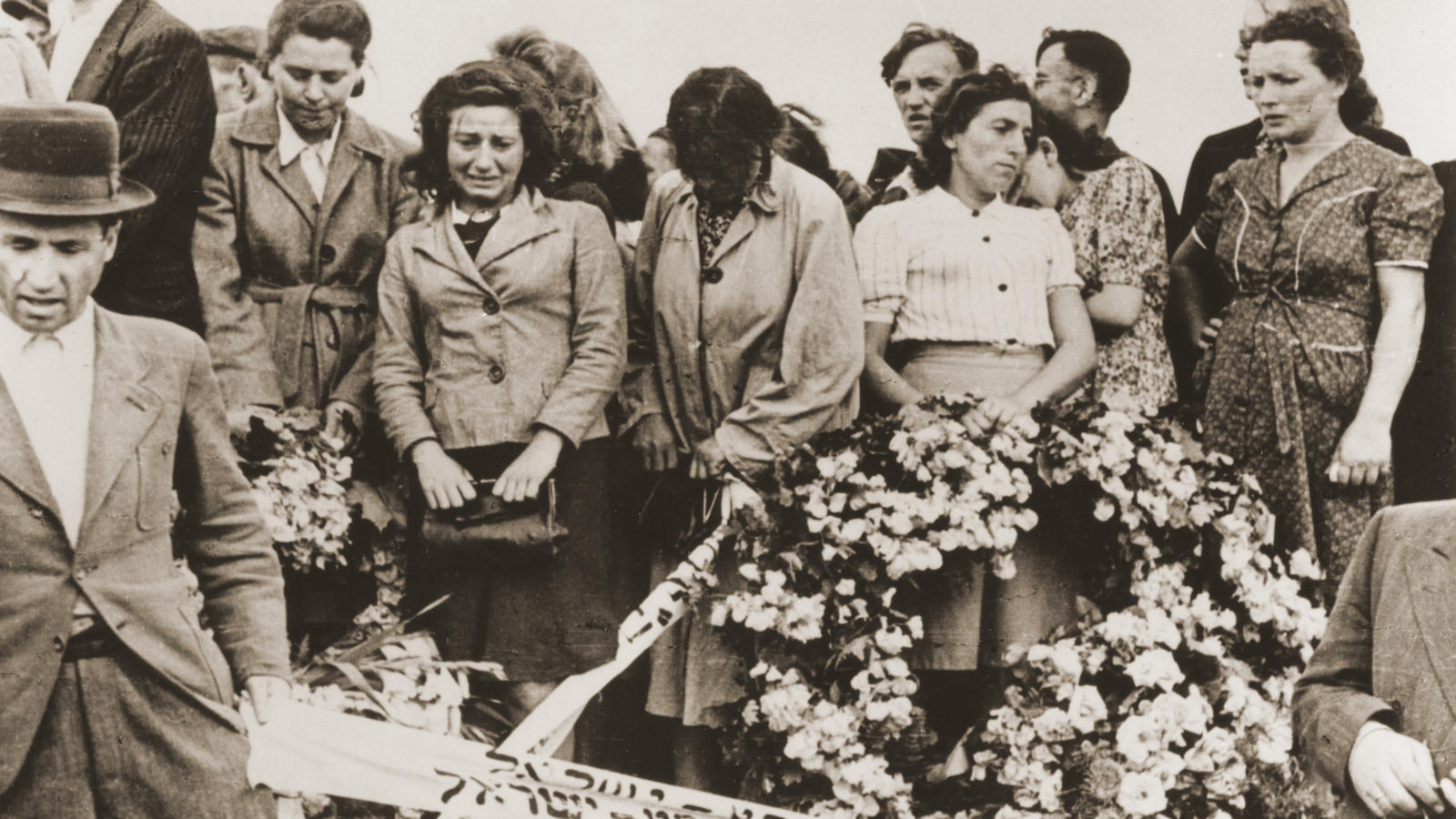
Street violence against Jews was common in Nazi Germany, and on Nov. 9–10, 1938, the wave of violence known as Kristallnacht was instigated by the Nazi Party. Street violence against Jews continued throughout World War II. In many areas under German occupation, Nazi officials and soldiers supported and encouraged pogroms. After World War II, pogroms continued in Europe. A pogrom occurred in 1946 in Kielce, Poland, against Jewish Holocaust survivors who returned to the town, leaving 42 dead. These pogroms further motivated the already devastated Jewish population to seek refuge outside of Europe.
Is the term “pogrom” still in use today?
The term “pogrom” is still in use describing contemporary events. In 1991 the Jewish media referred to the Crown Heights riots in Brooklyn as a pogrom, and in 2008 Israeli Prime Minister Ehud Olmert used the term to describe Jewish settlers‘ attacks on Palestinians in the West Bank city of Hebron. There is no consensus as to the exact defining characteristics of a pogrom, but the term still tends to refer to coordinated street violence against Jews and sometimes other ethnic groups.
